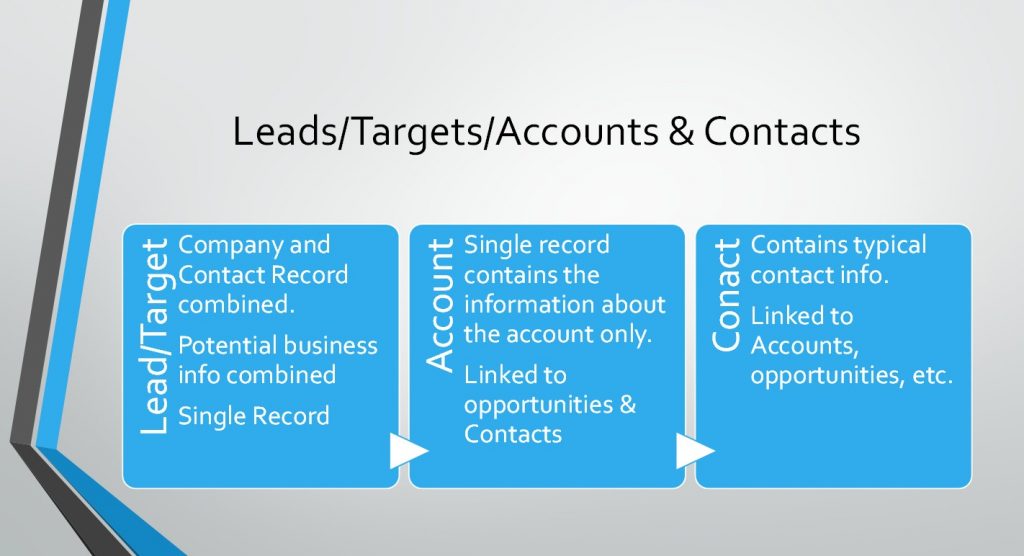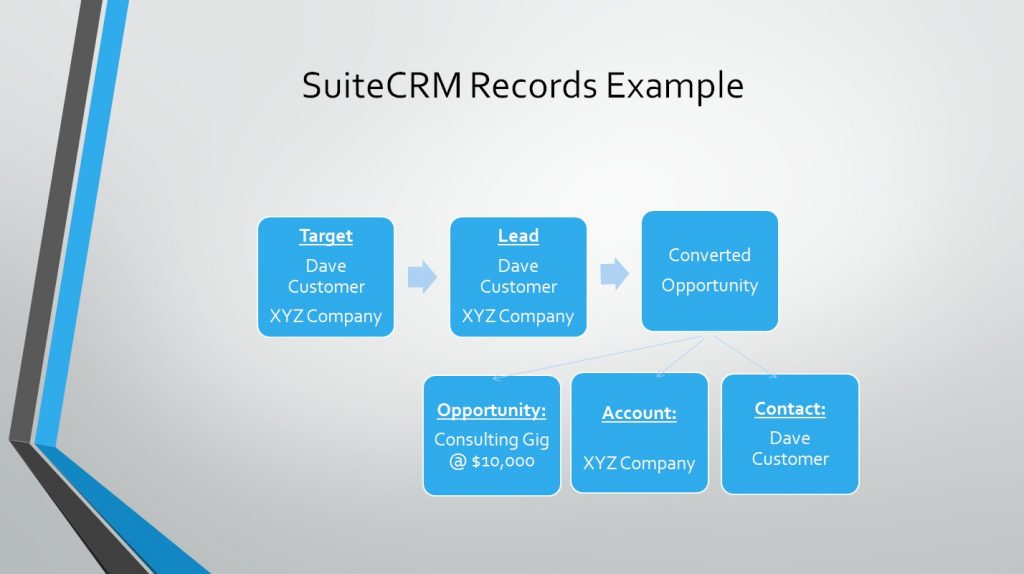New User SuiteCRM Overview
What are LEADS, TARGETS, OPPORTUNITIES, CONTACTS and ACCOUNTS
Understanding how SuiteCRM defines Leads, Targets, Opportunities, Contacts, and Accounts is key to understanding the general workflow in SuiteCRM. The key difference is that leads and targets are contacts where the “contact” and the “company” are a single record. Targets and Leads are used for very early sales stages where it doesn’t make sense to keep track of various contacts at a single account and/or you have limited information. Once a Lead is converted to an Opportunity, an Account and Contact Record are created.
Definitions
For the purposes of this training, these are the definitions we will work with. Many sales organizations have different definitions of “accounts” and “leads” and “customers”, etc. However, in SuiteCRM, these are very specific things. It’s often beneficial to spend a few minutes and cross-reference your sales organization definitions and how they relate to these definitions.
Account is the company.
Contact is the person that works for the company.
A Lead record has both the company and the person as one record (as do targets).
A Target record is pretty much identical to a Lead, just a way to identify people/companies whom you do not know.
Once an opportunity is identified, typically, Targets and Leads are converted to Opportunities with Accounts and Contacts.
Targets: Unknown, typically an email list of people/companies with little or no previous contact.
Lead: Known, typically expressed interest by web form, contacting you or a TARGET you’ve prospected who has shown interest.
Opportunity: A LEAD or TARGET who has not only expressed interest but has: 1) A deal, 2) Timeframe and 3) Budget.
Your Sales process may specify different qualifiers for an opportunity but deal, budget, and timeframe are pretty much universal opportunity qualifiers.
Careful: “Targets” are typically used in sales organizations as a name for a “hot prospect”. This is not the definition in SuiteCRM. Also, SuiteCRM uses “Target Lists” which are different from Targets entirely. This can be confusing and it is important that the definitions are clarified.
The Typical process is TARGETS are converted to LEADS and LEADS are converted to CONTACTS/ACCOUNTS.
What is the Purpose of Segregating LEADS, TARGETS, OPPORTUNITIES, CONTACTS, and ACCOUNTS?
The purpose is to focus your time appropriately. By classifying people and companies in this way you can organize and attack them differently. For example, TARGETS are best marketed to via email, LEADS deserve an intro call, Opportunities (Accounts & Contacts) need to be followed up relentlessly and require the most sales focus.




